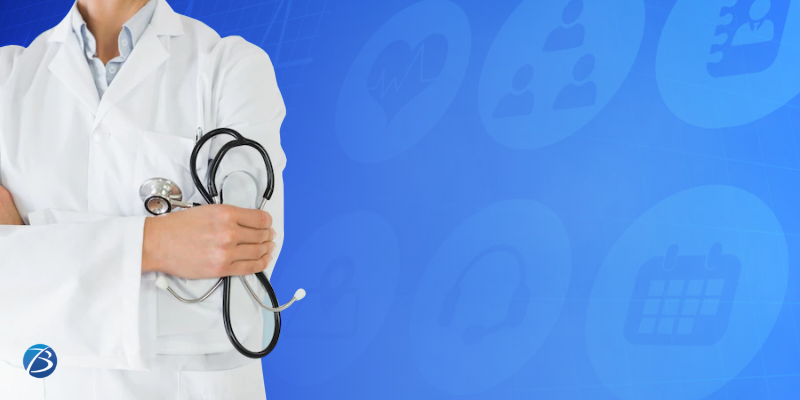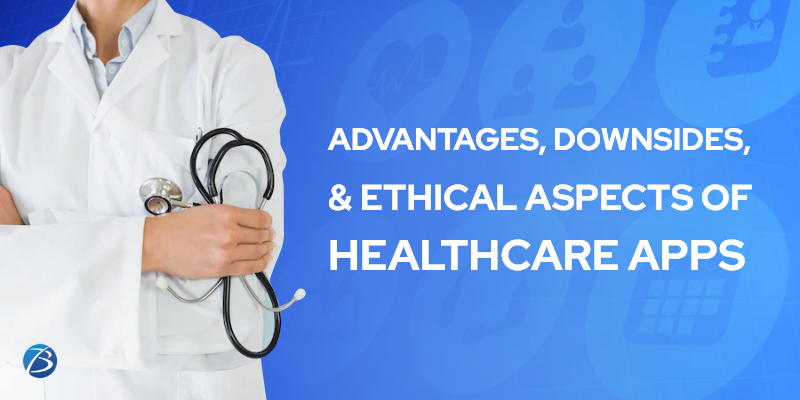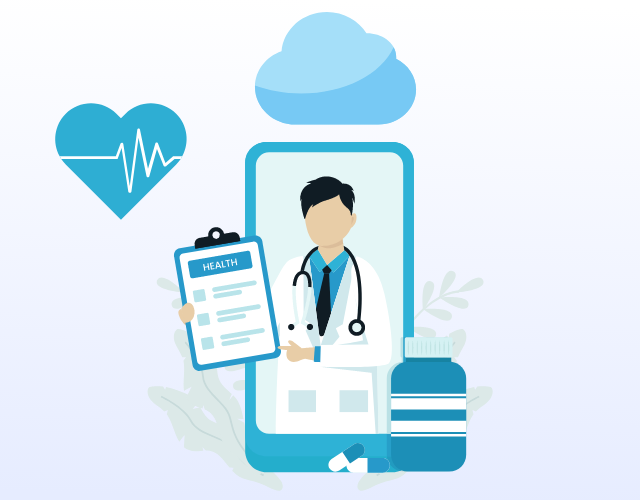Transportation & Logistics App Development: A Complete Guide
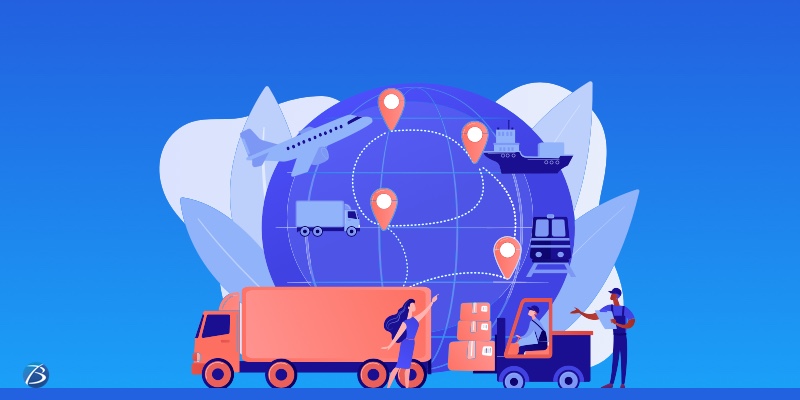
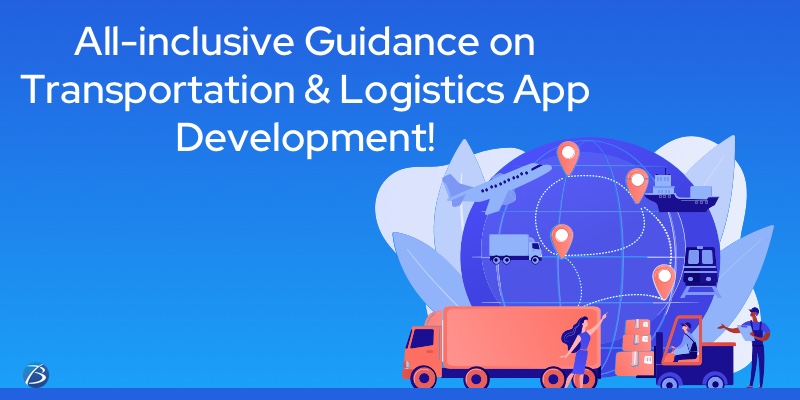
Fleet managers had relied on traditional methodologies to handle fleet operations and track vehicles for long, despite encountering certain operational challenges. As per a 2021 survey conducted by Statista, “85% of transportation and logistics businesses cited driver-related woes as the key issues.”
Here are some bottlenecks faced by transportation industry businesses!
- Rash driving & excessive truckload can lead to hefty fines.
- Idling (running the engine very slowly) during long hauls damages the engine over time, and raises the vehicle maintenance costs.
With traditional strategies, fleet managers cannot effectively monitor vehicles and drivers on the go. However with the advent of smart transportation solutions, transportation operations has been transformed completely and is delivering unthinkable outcomes. This approach has undoubtedly improved the transparency and visibility of transportation and logistics business operations, resulting in lesser mistakes and higher productivity.
One such disruptive IoT-based Transportation solution can handle the weight management of truckloads very easily and securely. Sensors embedded in vehicles track parameters like vehicle speed, freight load, vehicle anomalies, etc. in real-time and send alerts whenever necessary. These sensors are connected to apps; so the real-time data and notifications can be instantly viewed on the apps by fleet management staff and other authorized users.

A transportation & logistics app is the need of the hour! But, many businesses are reluctant to automate their workflow owing to its technical complexities. This post discusses the requirements, techniques, and key considerations of transportation & logistics app development. A quick read will guide you through the right approach for crafting a suitable logistics app for your business.
Transportation App Development: Major Steps
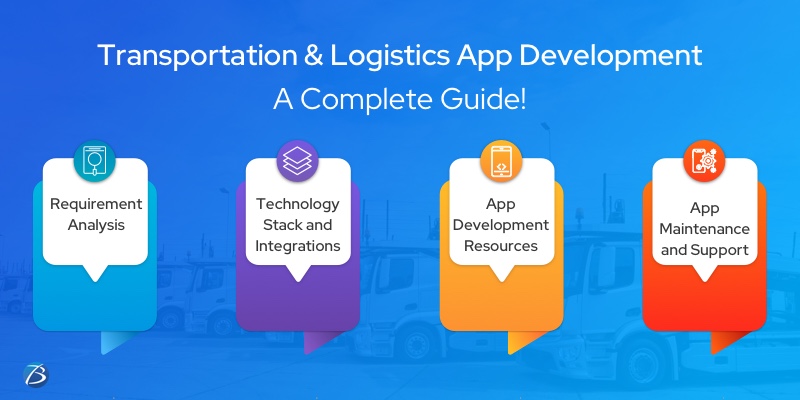
Requirement Analysis
A transportation application may serve different purposes for various businesses. So, it’s important to define the purpose for transportation app development – tracking of the fleet, drivers, or freight of your business, providing your customers with the facility of shipment tracking, or monetizing by selling the app to logistics companies. Once your requirements are clear, research who your target audiences are and what are their needs. Thereafter, decide on the feature set based on the needs of your targeted audience.
Technology Stack and Integrations
You need to decide on the below-mentioned factors before starting the development process:
- What kind of an app will you build?: Native, Hybrid, or Cross-platform
- Which Operating Systems will you target? : Windows, MacOS, iOS, Android, etc
- What tech stacks, software/data analytics tools, and integrations should you include as per the operational requirements? : IoT, AI, Hadoop, etc.
- Which database will you opt for? : SQL or MongoDB
- Will your app need Cloud storage? If yes, which type of storage will you go for: Google cloud or AWS?
- What kinds of payment options are you going to offer? : COD, mobile wallet integration, payment via credit or debit cards, etc.
App Development Resources
You can either hire an in-house IT team for building or maintaining your logistics app or hire app development services from an outsourcing service provider for executing your project. Adopting the offshore outsourcing approach and partnering with an experienced logistics app development company has so far proved to be the most profitable strategy. The reason is freelancing services are unreliable and maintaining an in-house software team turns out to be way too expensive and hassle-prone for businesses in the transportation sector.
App Maintenance and Support
Your logistics app may come across bugs post-deployment. Also, it’s necessary to add new features as per the changing market trends and audience feedback. So, periodic updates have to be rolled out for staying relevant and competent. Therefore, it is advisable to go for end-to-end app development services including maintenance and support after launch.
Transportation App Development: Feature Set
Driver Panel
Registration & Profile Creation
Drivers should be able to register themselves effortlessly and speedily. They need to create their profiles by filling in details like name, age, and the license plate number along with its type and expiry date. The profile must also contain a photo of the driver. This data is stored in the app’s backend. The information is useful to admins for identifying drivers and linking a particular driver to a shipment. Also, this feature should offer authentication methods while the drivers log into their accounts.
Screen displaying Shipment Information
This screen is used by the drivers to view the necessary shipment details including the present as well as scheduled orders, pick-up & delivery locations, and the estimated date & time of order delivery. Usually, there’s a hidden screen here that displays extra information if the driver clicks on it. This screen contains data like the total distance to be covered, a map button, details about recipients & their payment mode, notes by consumers related to delivery, and information on the freight, additional stops, etc.
Navigation/Map Integration
Map integration into the app provides drivers with guided routes that help drivers to follow the right path to their destination. Some advanced navigation functionalities offered are real-time traffic information; route optimization suggestions based on the traffic condition, tolls, etc.; speed limit notification for certain roads; and info on charging stations, food courts, etc. available on that route.
The map feature should also be available during offline mode so that drivers can obtain navigation assistance even at locations with very low or no internet connectivity. This feature is handy for admins as they can track down the exact location of the vehicle on the go.
Log Records
The drivers need to log their daily activities like distance travelled, number of hours they have worked, shipments collected, orders delivered, etc. This way, admins can monitor whether the drivers are carrying out their duties as desired and the shipments are successfully picked up & delivered without being misplaced.
Push Notifications and In-app Chats
Push notifications are essential for informing the driver about newly allocated orders, modifications in pick-up/delivery locations, a fresh set of instructions from admins via in-app chat, and so on. In-app chatting also allows the drivers to communicate and stay in touch with consumers, managers or other staff.
ePOD (Electronic Proof of Delivery)
This feature includes barcode scanning, capturing pictures of shipment, and collecting consumers’ digital signatures during the time of shipment delivery. This is important to ensure that the order has been delivered successfully.
Admin Panel
Login
Admins need to create an account for maintaining the integrity of the entire transportation and logistics operations. The app must provide an option of logging in using an ID and password. Here, adding extra layers of security is recommended to prevent unauthorized access.
Admin Dashboard
A well-crafted dashboard is a crucial component of transportation app development as it offers all essential information to managers in a nutshell. The dashboard processes and displays information on the status of ongoing shipments, order history, summaries of drivers’ activities, average time taken for loading & deliveries, pending complaints, KPI sheets concerning data analytics & weekly/monthly/yearly revenues collected, etc.
Order Management
This feature updates the fleet managers on important data like the number of shipping orders, the current status of ongoing shipments, completed shipping orders, new or pending shipment orders, freight details, customer details, payment details, consumer notes, and the average revenue generated for each order.
Admins allocate new orders to drivers using this functionality. Here, you can smarten your allocation activity by employing AI. Artificial Intelligence systems automatically assign the duty to drivers based on certain pre-defined parameters. For instance, the driver who is off duty for a long period or the driver who is at the nearest location from the pick-up point is considered.
AI-powered logistics apps can also assist in truck loading. The AI algorithms automatically analyze the different transportation requests present within the logistics system and identify the various orders that will move in the same direction. Based on this information, the software then suggests which loading sheets will be connected in which order. An AI-powered automation system can effortlessly and accurately execute complex operational requirements like cross-docking, LTL, catering to multi-stop destinations, pool distribution, and trailer swapping.
Chat & Push Notifications
Admins receive information on drivers, invoices, and shipment delivery status and can keep consumers updated about the status of their orders that are being delivered. The in-app chat feature enables the admin to stay connected with drivers and interact with customers & solve their queries.
Monitoring of Drivers, Vehicles, and Routes
Admins can remotely monitor and track aspects like drivers involved in shipping, the number of orders executed, the fuel consumption by each of the vehicles that are in transit, the current vehicle condition, pollution data, servicing requirements, etc. Admins can also track the route taken and the real-time status of the shipment.
Management of Drivers, Fleet, Chats, & Expenses
Logistics and transportation app development must include features that allow the admins to collect & maintain driver records, route schedules, and communication with consumers as well as drivers via chats. The app must also provide features for carrying out sales management duties. This includes accepting or disapproving extra expenses while making deliveries. Admin can also review administration expenditure; and calculating the profit and loss ratio. Here too, the integration of AI will help in automating these tasks.
Consumer Panel
Registration & Login
Effortless and secure profile creation & sign up procedure, order management, and order history details for consumers.
Order Booking
This feature allows customers to schedule the order delivery as per their convenient date, time, and location; select the preferred type of vehicle for delivery; interact with drivers in transit for obtaining shipment status; and contact admins and receive timely responses. Consumers are informed about the estimated fare before booking transportation orders.
Delivery Status & GPS Tracking
Customers should be able to view details of the driver & vehicle delivering their order and track the present location of their parcel in transit, the estimated delivery time, date, etc.,
In-app Chat and Push Notifications
In-app chat allows consumers to interact with drivers or admin as and when required. Users must be able to share pictures and documents besides the regular text messaging functionality. Push notifications keep the consumers updated about the delivery status, unexpected shipment delays or failures due to unforeseen circumstances, etc.
In-app Payment Integration
Offer several in-app payment options to consumers like digital wallets, credit/debit card payments, etc. by integrating payment gateways such as Braintree, PayPal, Stripe, etc. Also, ensure that the payment systems are well secured and the privacy of your consumers’ payment details is maintained.
Ratings & Reviews
The option of rating the delivery service quality and writing reviews about it; will help you to build up trust amongst your consumers, identify the existing problems within your system, and work on the areas of improvement.
Transportation App Development: Key Considerations
Keep it simple
A complex app with too many unwanted features creates bottlenecks instead of streamlining transportation operations. Moreover, too many functions may confuse consumers and lead them to abandon your app. This can also make it difficult for drivers and admins to manage; resulting in costly errors and delays. Hence, keep your feature set intuitive and simple ; integrate only those features that are necessary for your operational workflow. Also, do not update your app very frequently; this will make it difficult for users to cope with the modifications.
Quick Load Times
Time is money! Hence, your logistics app shouldn’t take more than a couple of seconds to load; or else your investment in transportation app development is wasted as you are sure to lose consumers.
Intuitive UI/UX Design
An intuitive UI/UX design matters a lot when it comes to customer experience and satisfaction.
Social Media Integration
New-age users are addicted to social media. As such, integrating social media into your logistics and transportation app makes your app all the more popular and widely accepted. Users get the option to log in using their social media account; this enhances consumer engagement. Furthermore, you can create a social media community for providing important information and expanding your consumer base.
Final Thoughts:
I hope the aforesaid information and tips have provided you with a clear idea of the dos and don’ts of transportation and logistics app development. A transportation app will improve the visibility, transparency, efficiency, productivity, and the security quotient of business operations and takes your business to the next level.
Develop the right solution/app; and complex tasks like fleet management, tracking, etc. will be at your fingertips. That’s why most businesses these days are partnering with proficient transportation app development services for tailoring customized software solutions that will best suit their operational requirements.

